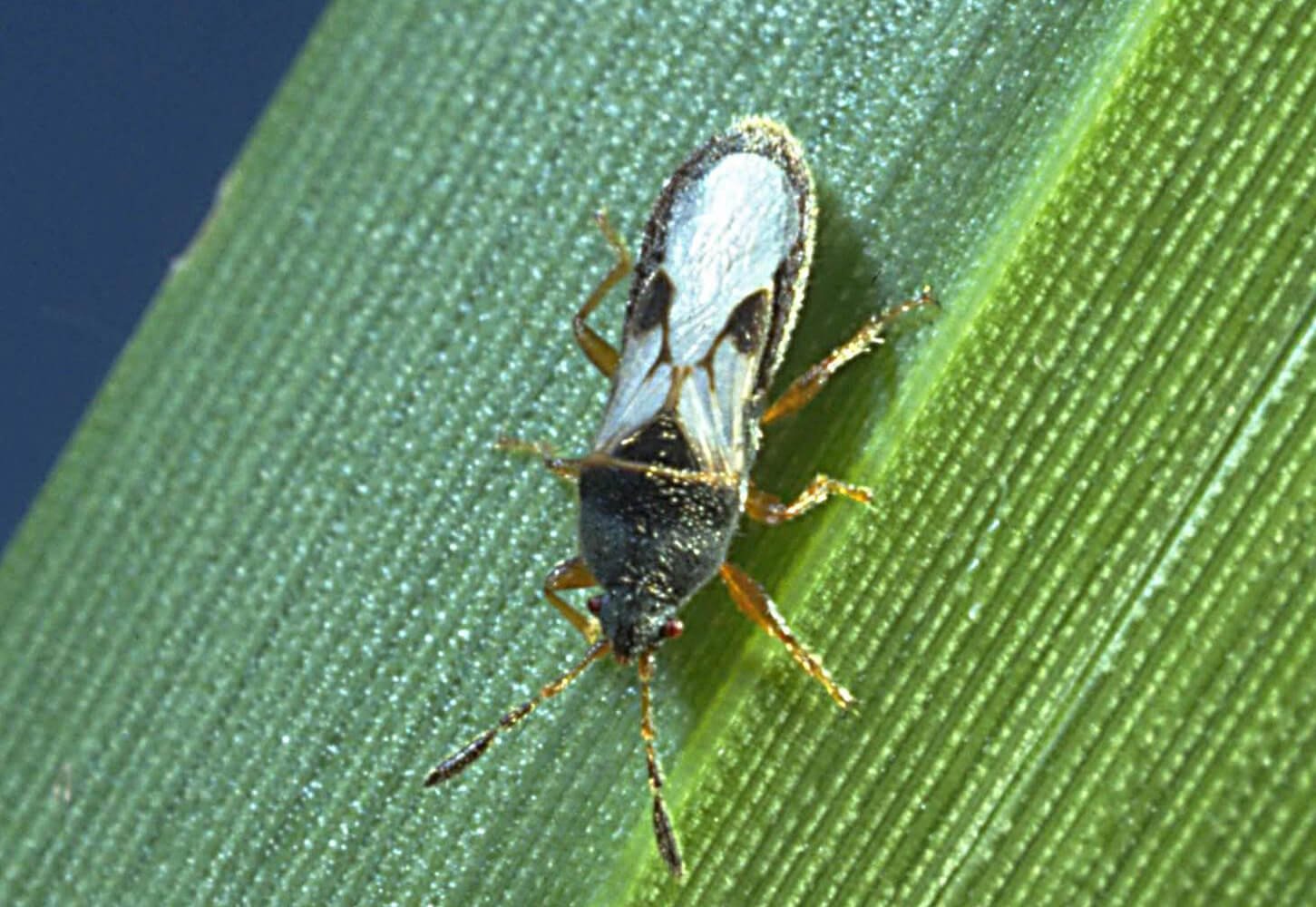
Insect Control
Chinch Bugs
Are you finding dry or brown patches in your lawn, you may have Chinch Bugs. The most common sign of Chinch Bug damage is patches of brown dead lawn. It looks more like scattered patches of wilted grass, your grass changes from green to pale yellow and eventually a reddish brown.
Chinch bugs are tiny insects that like to live in the thatch layer just above the soil surface and feed off the blades of grass. They are commonly found in areas that receive full sun and you will see the most damage during our hottest summer months. Chinch Bugs are more active during hot, arid weather.
Chinch Bug Life Cycle
The life cycle of a chinch bug starts as a tiny, pale white oval egg that turns red before it hatches. After 20 to 30 days, the eggs hatch, and nymphs start feeding on grass. At this stage, they are reddish brown with a white stripe across their abdomens.
In about four to six weeks chinch bugs are mature, they have a black body with white wings. Adult Chinch Bugs can fly and mate, then the females will lay more eggs to repeat the life cycle.
When the weather becomes cooler in fall, adult chinch bugs seek refuge in the roots and base of the grass. Then, when temperatures rise in the spring, the adults emerge and the life cycle continues, along with more damage to your lawn.
Cinch Bug Damaged Lawn
Cinch Bug
How to Look for Chinch Bug Damage in Lawns
The first step to checking your lawn for Chinch Bug presence is to carefully look for them. Best way is to get down on your hands and knees and separate the blades of grass. Next, you will want to look under your thatch and just above the soil surface, for immature bugs and winged adult chinch bugs. The adults are typically black and white, whereas the nymphs are usually orange, red, or dark brown and have a white band across their abdomen. The best place to check for Chinch Bugs is at the edge of the brown patches, where the unhealthy part of your lawn meets healthy green lawn.
How to Help Prevent Bug Damage
Watering: Watering regularly in the early morning for approximately 30 – 45 minutes at least twice a week, especially on the hotter days. You want to avoid late afternoon or evening watering, as grass that stays wet for a long time favors the development of diseases and welcomes insects.
Mowing: Mow your lawn 2 ½ to 3 inches; this is normally the highest, or second highest setting on your lawn mower. Mowing once per week should be adequate.
Fertilizer & Weed Control: Regular applications of our complete, balanced fertilizer, micronutrients and weed control formulated to meet your lawn's seasonal requirement. Our 8 Step Program offers you 4 applications, that include fertilizer and weed control in a liquid application.
Core Aeration: Aeration helps control thatch, improves soil structure, helps reduce insect infestations, helps create growth pockets for new roots and opens the way for water and fertilizer to get into the root of your lawn.
Have Cinch bugs and need help controlling them?


